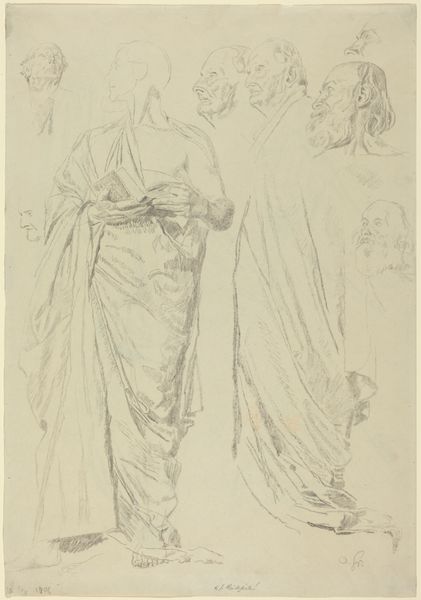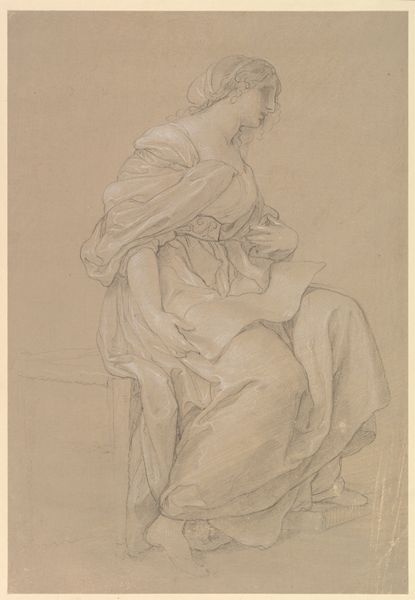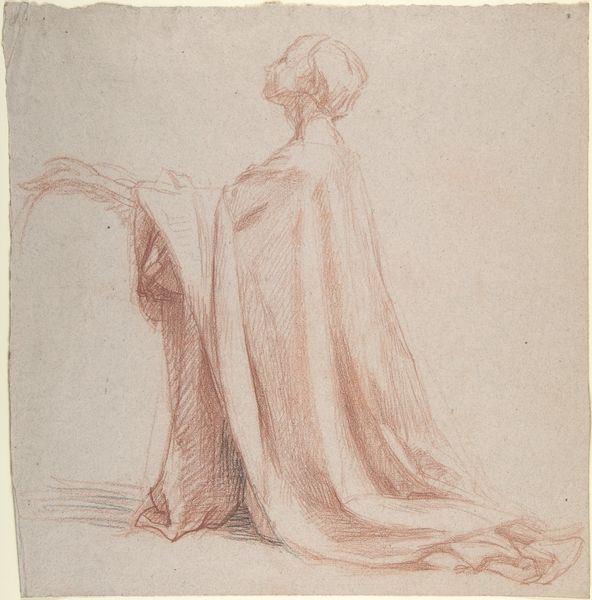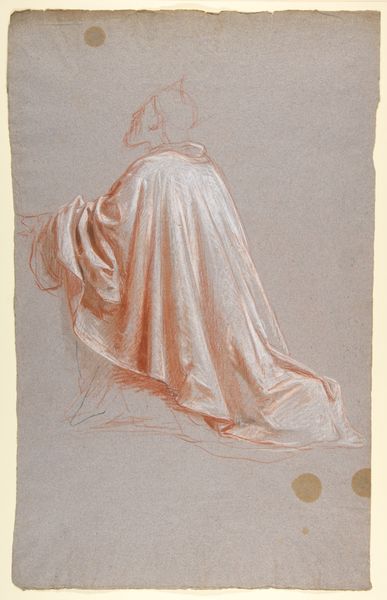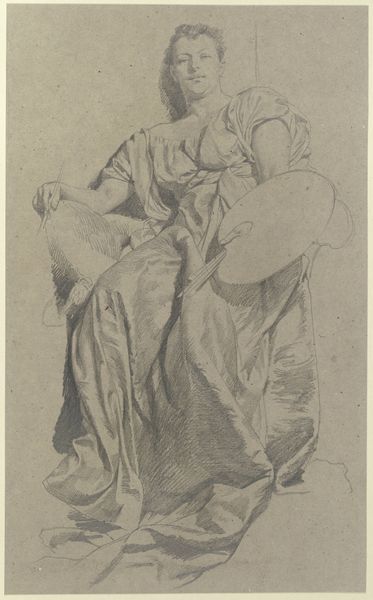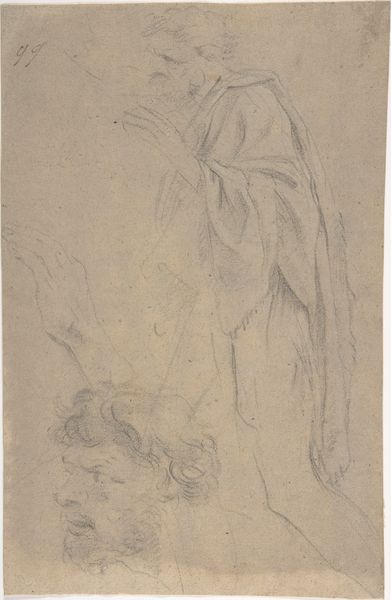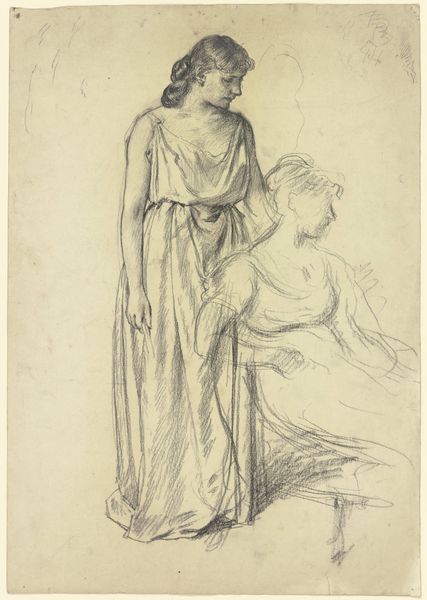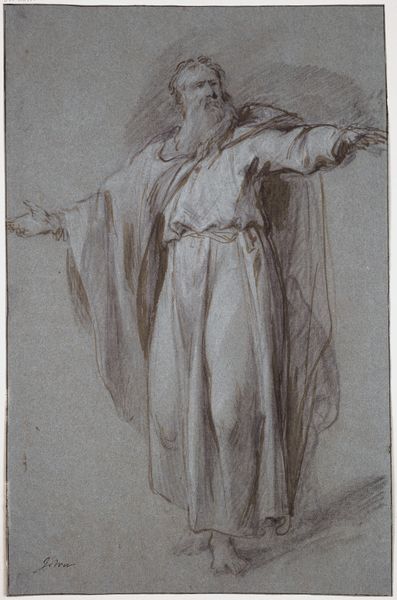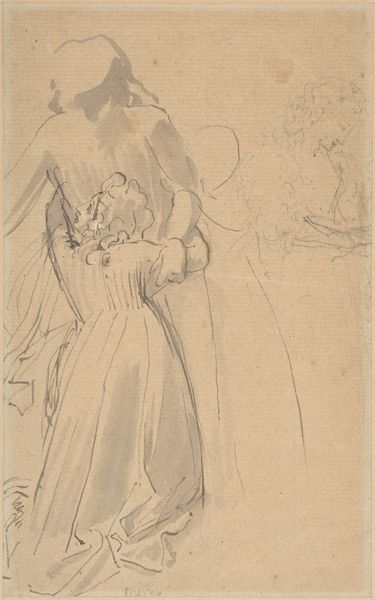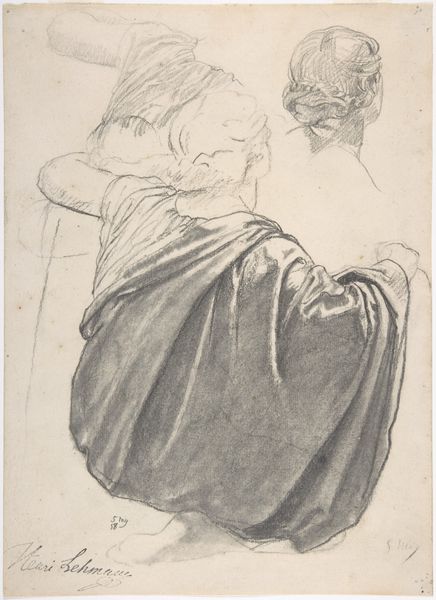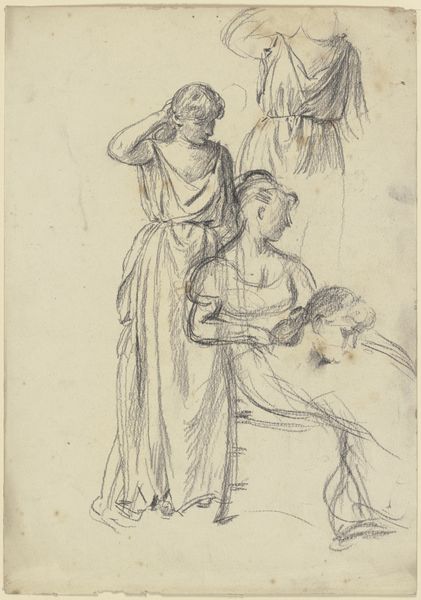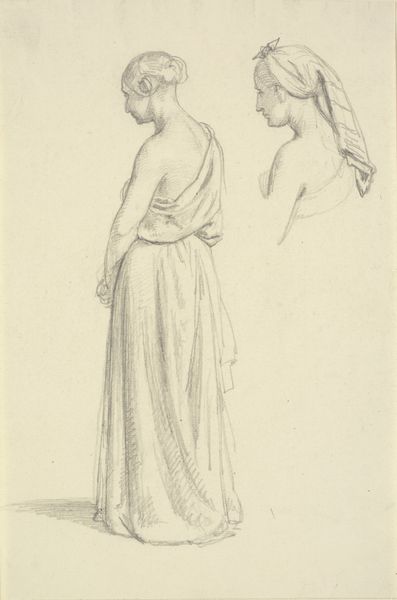
drawing, print, pencil
#
drawing
# print
#
pencil sketch
#
figuration
#
pencil drawing
#
pencil
#
academic-art
#
realism
Dimensions: Overall: 9 7/16 x 8 3/8in. (23.9 x 21.2cm)
Copyright: Public Domain
Curator: Welcome. Alexandre Laemlein's "Two Kneeling Figures," created sometime between 1830 and 1871 using pencil, presents an interesting study in form. Editor: This pencil sketch immediately strikes me as preparatory. The draping of the fabric is compelling, though quite unfinished in areas. What do you see in terms of Laemlein’s formal choices? Curator: I am drawn to the relationship between the visible and the implied. Note the artist's concentration on line and volume. The economical use of line suggests weight and mass. The ambiguous background allows us to focus solely on the figures and the texture of their garments. Consider how the varying pressure of the pencil creates light and shadow, defining the forms. The academic art and realism are interesting styles present. Editor: It's interesting how the sketch emphasizes volume and texture despite being so minimal. Is the rough quality part of a formal statement, or just the nature of preliminary work? Curator: Perhaps both. The artist's choice to leave certain areas unresolved prompts the viewer to engage actively in completing the image mentally. The unfinished quality could itself be a conscious artistic decision, drawing attention to the process of creation rather than a finished product. The contrast between the detailed hands and the less defined drapery invites us to compare levels of resolution and think about their purpose. How do these comparative relations make you feel? Editor: It emphasizes that form and feeling are interconnected here. Thinking about the figures in relation to the sketch quality shows me new appreciation. Thank you. Curator: Indeed, reflecting on the relationships that make the whole of a composition, allows a dialogue between the art and its interpreter.
Comments
No comments
Be the first to comment and join the conversation on the ultimate creative platform.
